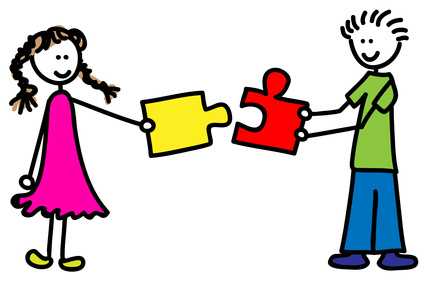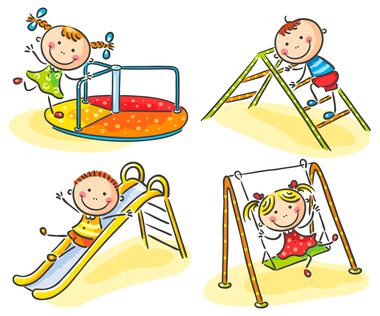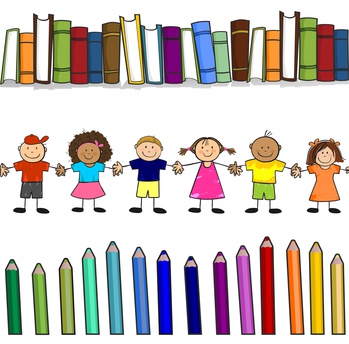Vygotsky's learning theory
Vygotsky (1896-1934) believed that children learn inherently in social context; in other words children learn and gain understanding by interacting naturally with others including parents, siblings, friends, peers, teachers, mentors and so forth.He also created the concept of 'scaffolding' which involves children being supported by adults to learn concepts and skills. The adult gives gradual support (scaffolding), and as the child builds confidence and evolve, adult slowly removes their support, hence allowing the child to perform independently.
Examples:
Button up coat
Tie show lace
Build with legos
Threading beads
Playing board game draughts or chess
Playing hop scotch
Assembling parts to a toy
Riding a bike
Swimming
Skating
Telling the time
Learning to add and subtract
Reading and writing
| Vygotsky's Concepts | Concepts in practice | Concepts relating to EYFS |
|||
|---|---|---|---|---|---|
| Social interaction Vygotsky believes that children learn through social interaction with experts or experienced others.E.g. Parents, teachers, early years practitioners, peers, friends, siblings and others. |
Early years practitioners can assist children during activities to promote development. In early years setting practitioners can play simple board games like ludo or snakes and ladders designed for younger children. In schools teachers can set up group activities aimed at problem solving. They can interact with the children to encourage them to engage in the activities and nurture their thinking. |
*Forming positive
relationship with the children: Having a key person in the nursery to support child and encourage learning. In the early year setting, key person (practitioner) can build a warm trusting relationship with a child by making them feel safe, secure and meeting the child's individual needs. The trust is the catalyst for positive interaction that will facilitate child's learning and development. *Play and exploration: Playing with other children or their peers is important for children's development. |
|||
| Scaffolding The adult gives gradual support and as the child builds confidence and evolve. The adult slowly or gradually removes their support (scaffolding), hence allowing the child to perform independently. |
Early year practitioners can encourage children to play or engage in the activities by giving them some guidance and praising them in their efforts and achievements. Talking, encouraging and helping them or being by their side when they are learning a new skill. E.g. riding a bike, doing a puzzle, threading beads, or playing football or passing the ball. |
*Allocate a key person to each child
to support child in the nursery. Key person role to understand and accommodate a child's needs in the nursery |
|||
| ZPD –Zone of Proximal child can do and what a child is capable of achieving when shown how to do something by an adult or experienced person. Children regardless of their age are capable of further development if supported and guided by people who are knowledgeable or experienced. |
Practitioners can ensure that activities that have elements of adult-led and child-initiated play
Practitioner can support children to reach their potential by showing or demonstrating how something is done, and
then allowing them to do it by themselves. Practitioners can give tips and show some techniques on how something is done. Cultural tools can be used in early years setting to facilitate learning: paint brushes, crayons, books, play dough,bikes and puzzles. Cultural tools can be used in schools to facilitate learning: calculators, i pads, computers, dictionaries, books and films. |
*Every child is unique. Practitioner can be mindful of the children's uniqueness when carrying out an observation to assess children's progress or abilities. Practitioner can take into consideration children's uniqueness when planning and designing structured activities. *Learning & development: Practitioners can set challenging tasks to stretch children's thinking. |
Language theory Vygotsky believed children made sense of the world through language. Language as an essential tool for communicationthat allows children to interact with others in society. Language acquisition supports thinking. Toddlers at age 2 say words out inwardly or out loud. External speech - which allows communication with other children and adults. Between age 2 to 3 years, children no longer able to use the inner speech ; they are ego centric in language ability. They will use language to direct and control thinking and speak aloud to themselves. 3 to 7 years, children use their inner voice (silent thoughts) to direct thoughts and behaviour. To promote development |
of language: Use puppets, sing songs, and nursey rhymes etc. Set up activities that encourage speech and learn new vocabulary: for example, 'naming object activity' Read stories that grab children's attention and encourage children to ask questions. Use puppets, sing songs, and nursery rhymes etc. Set up activities that encourage speech and learn new vocabulary: for example 'naming object activity' Read stories that grab children's attention and encourage children to ask questions. Set up activities that encourage speech and learn new vocabulary: for example 'naming object activity' Read stories that grab children's attention and encourage children to ask questions. Use puppets, sing songs, and nursery rhymes etc. Set up activities that encourage speech and learn new vocabulary: for example 'naming object activity' Read stories that grab children's attention and encourage children to ask questions. *Learning and development: |
prime area: communication and language: Set task that promote language development and enable children to communicate. Talk to children when they are engaged in a task, make suggestions or ask questions. Secondary area of learning: maths and literacy: Encourage children to play board games where they are learning to count. Sing nursery rhymes from which they learn new words. Encourage children to write their names on paper and drawings that they have done. Prime area: communication and language: Set task that promote language development and enable children to communicate. Talk to children when they are engaged in a task, make suggestions or ask questions. Secondary area of learning: maths and literacy: Encourage children to play board games where they are learning to count. Sing nursery rhymes from which they learn new words. Encourage children to write their names on paper and drawings that they have done. |
Linking theory to practice
In your setting, find out how practitioners support
children with language development.
REFERENCES
Silver, D (2011) Using the Zone Help Reach Every Learner. Kappa Delta Pi Record 47(sup1) , 28-31Tassoni et al (2007) Level 3 Childcare and Education.Heinemann: England
Tassoni et al (2010) Level 3 Certificate for the Children and Young People's Workforce. Pearson: Harlow Essex
Vygotsky L (1978) Interaction between learning and development . Reading on the development of children 23(3) 34-41






